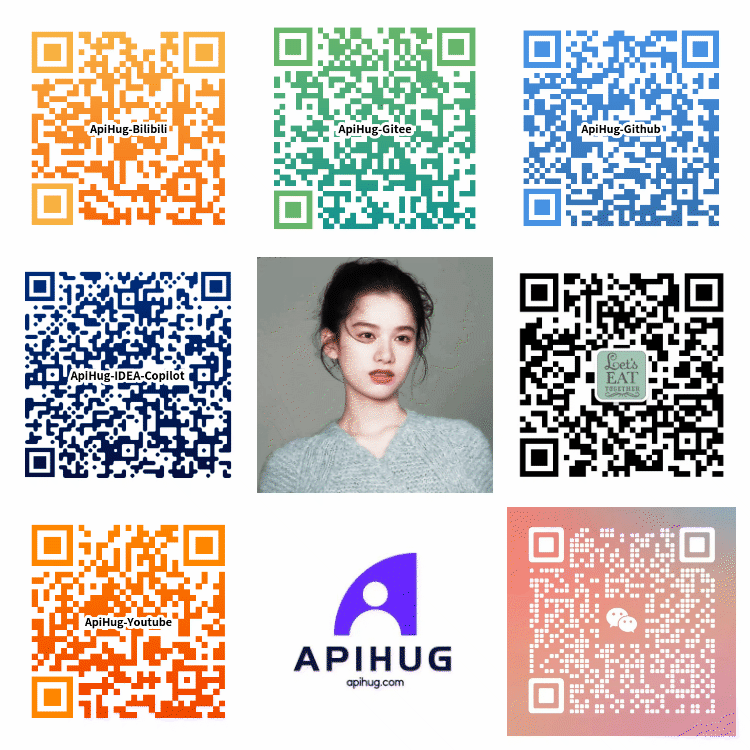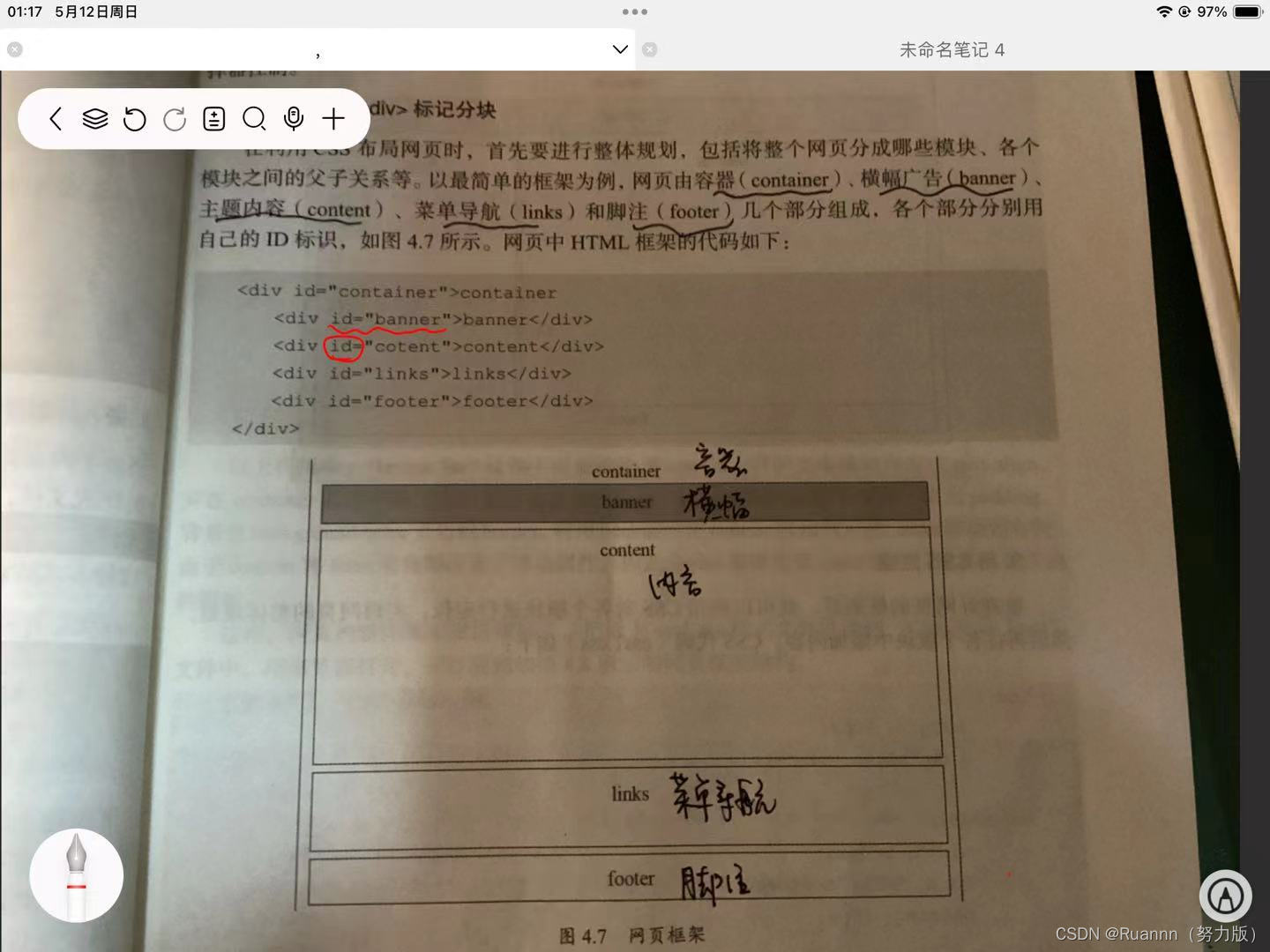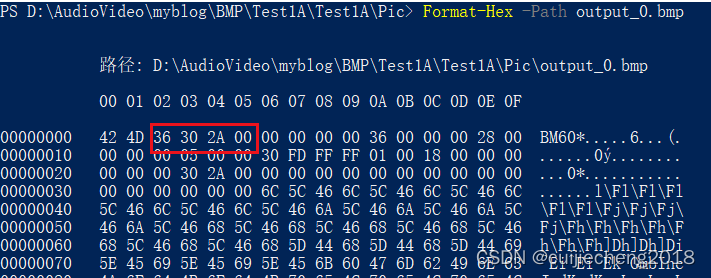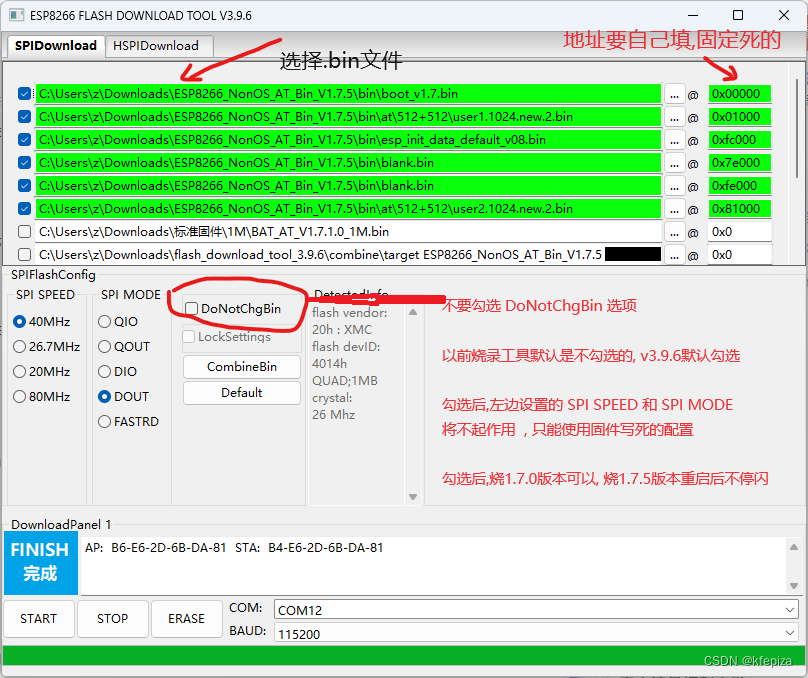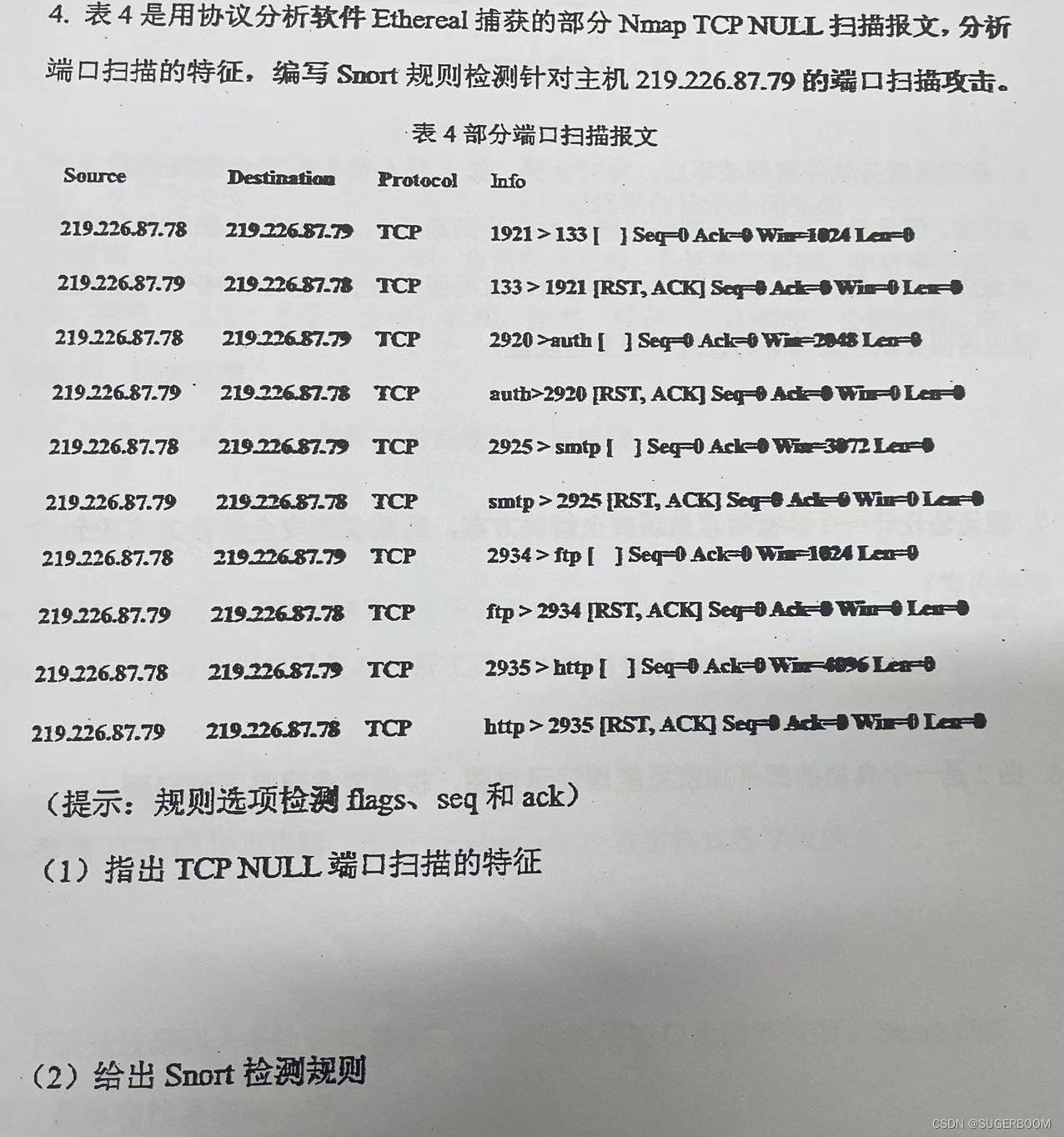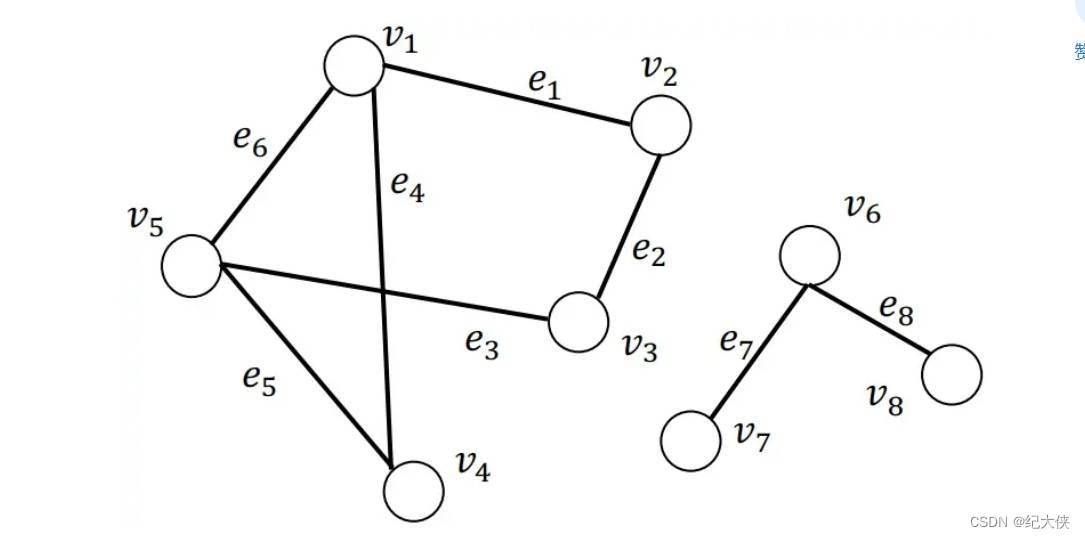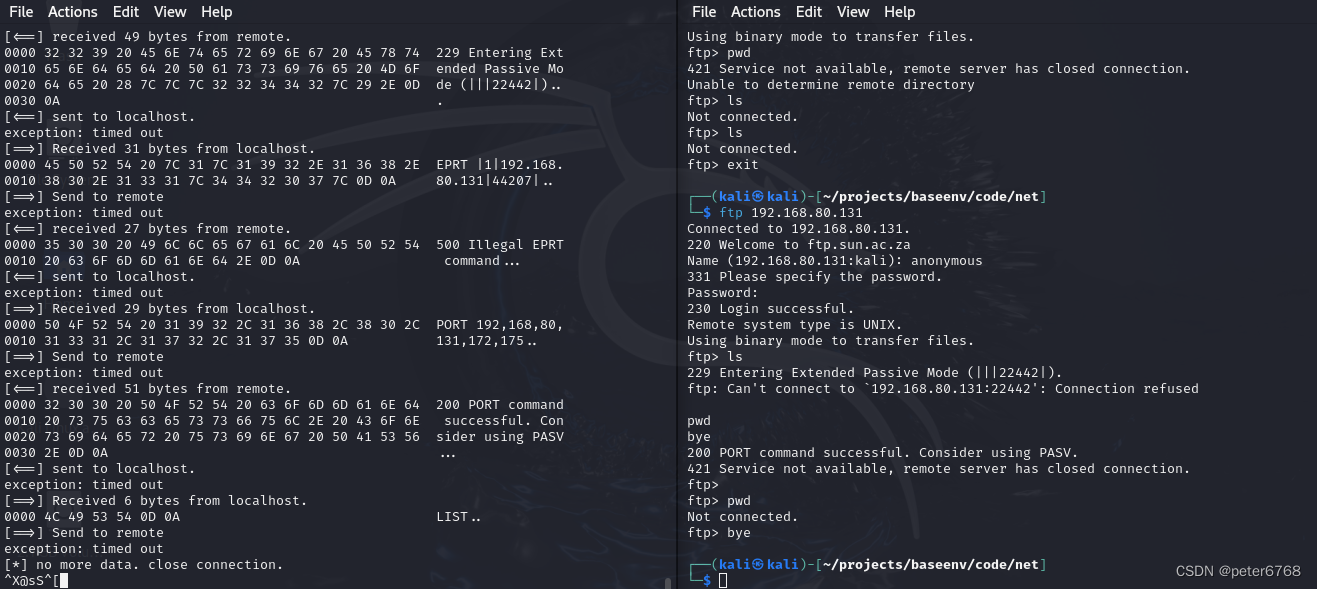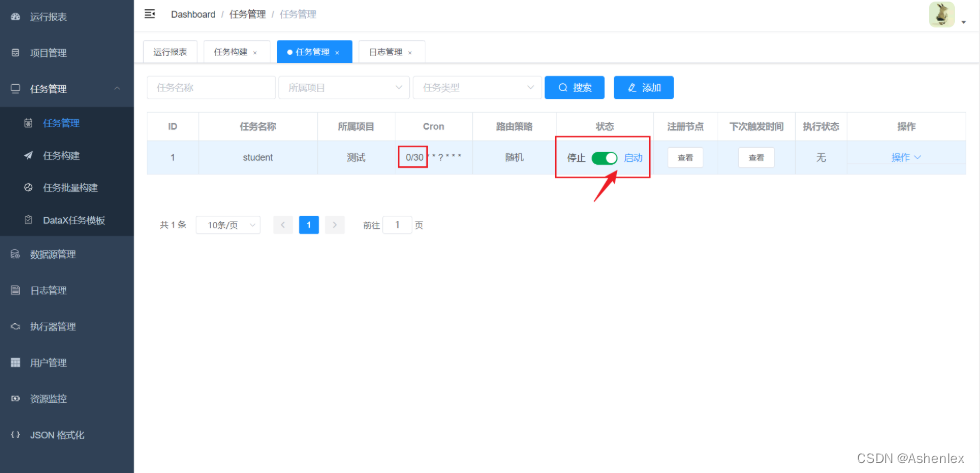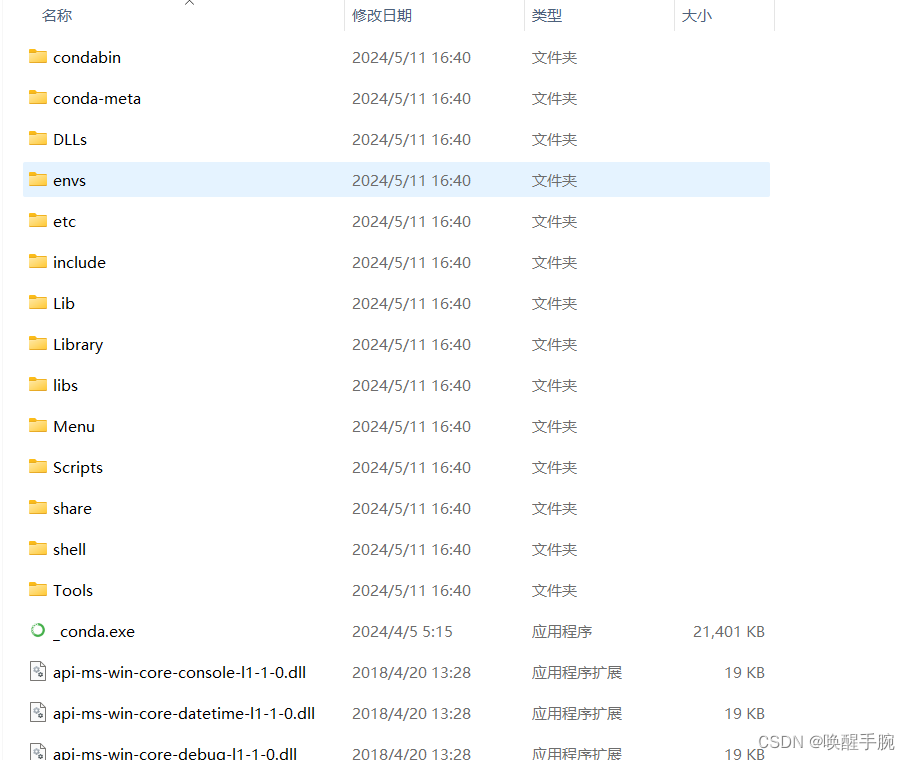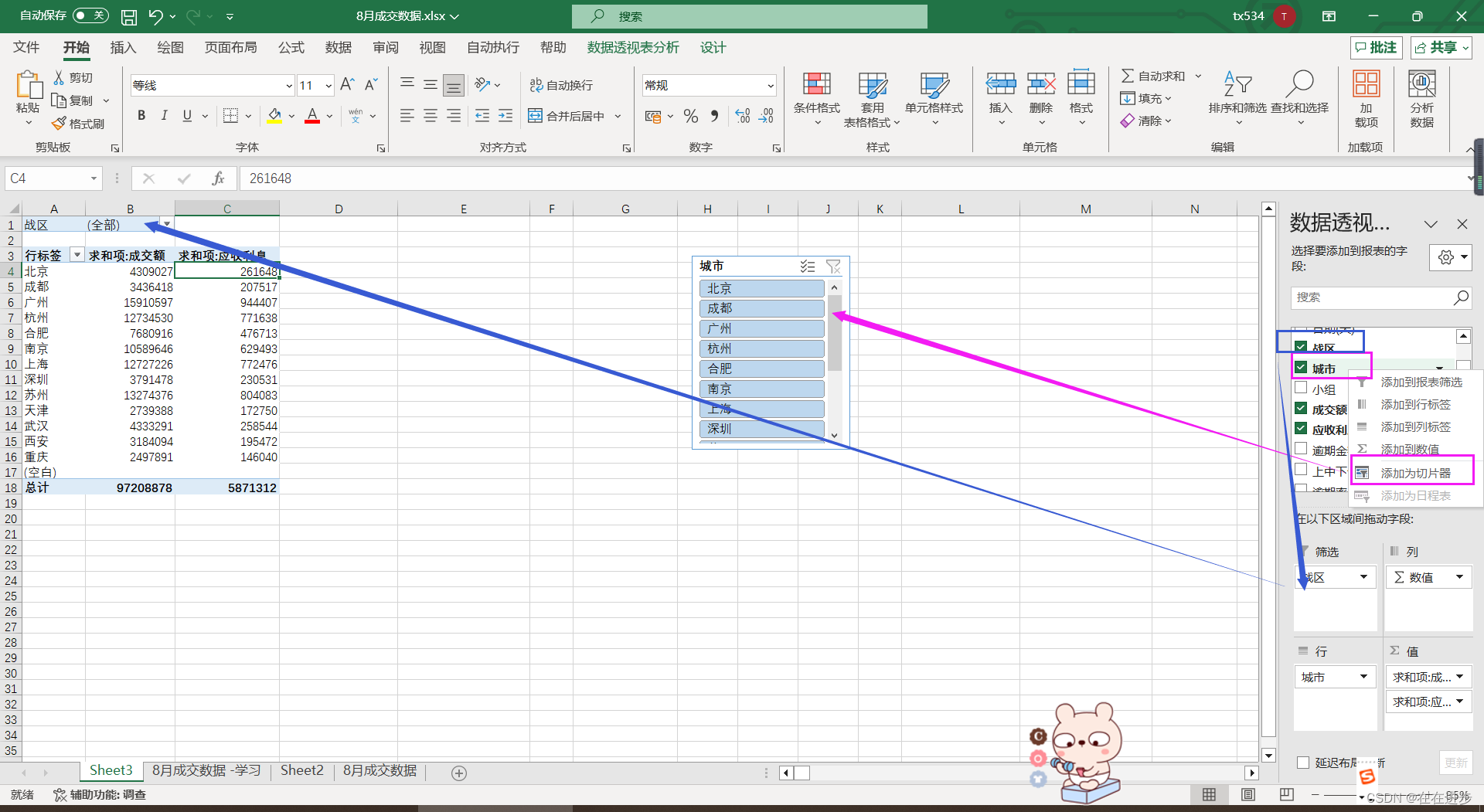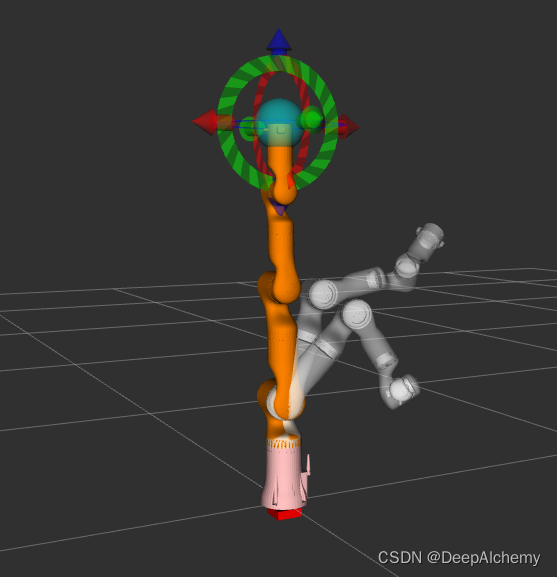我的课表
需求分析
原型图
管理后台

用户端
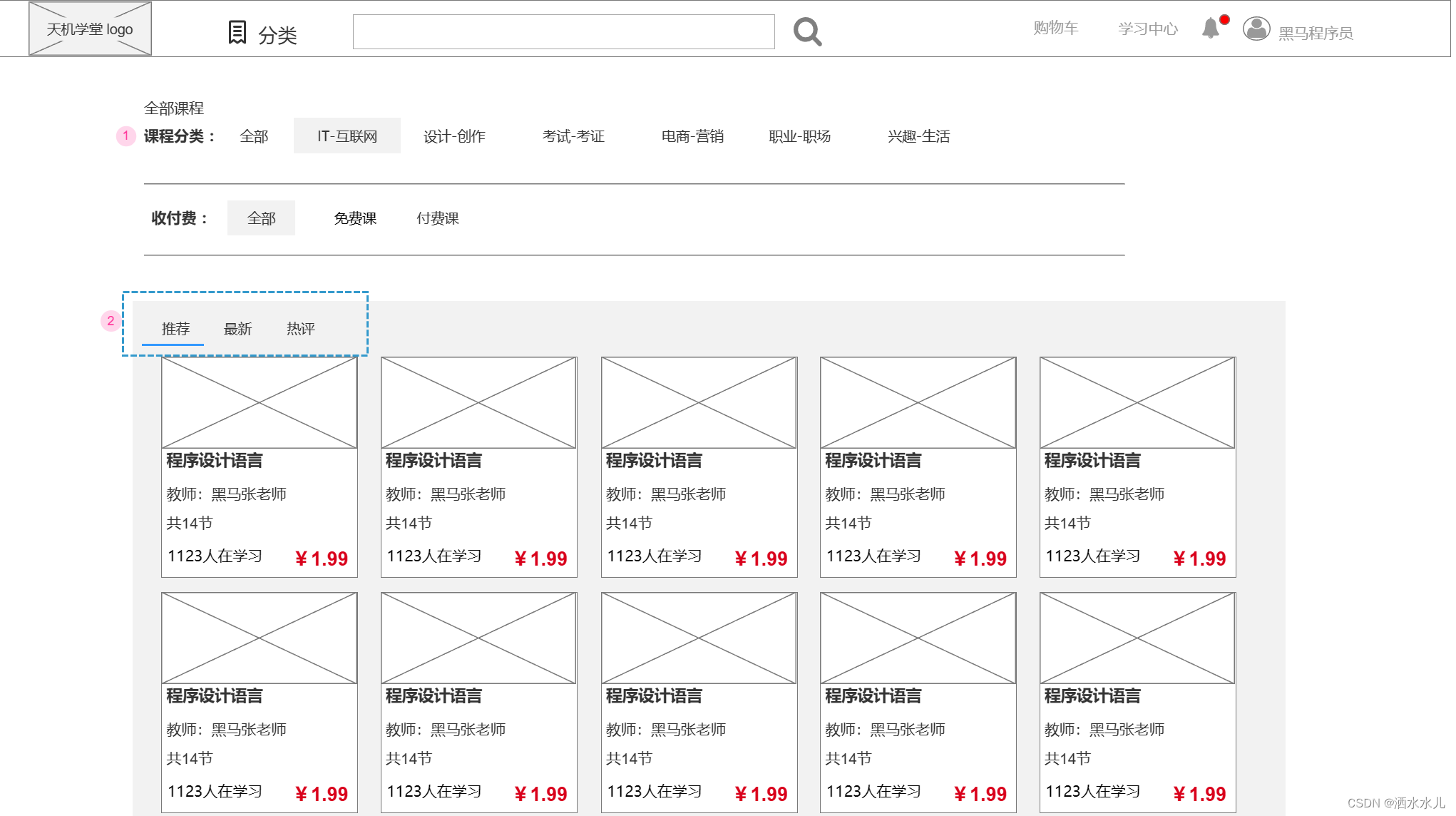
流程图
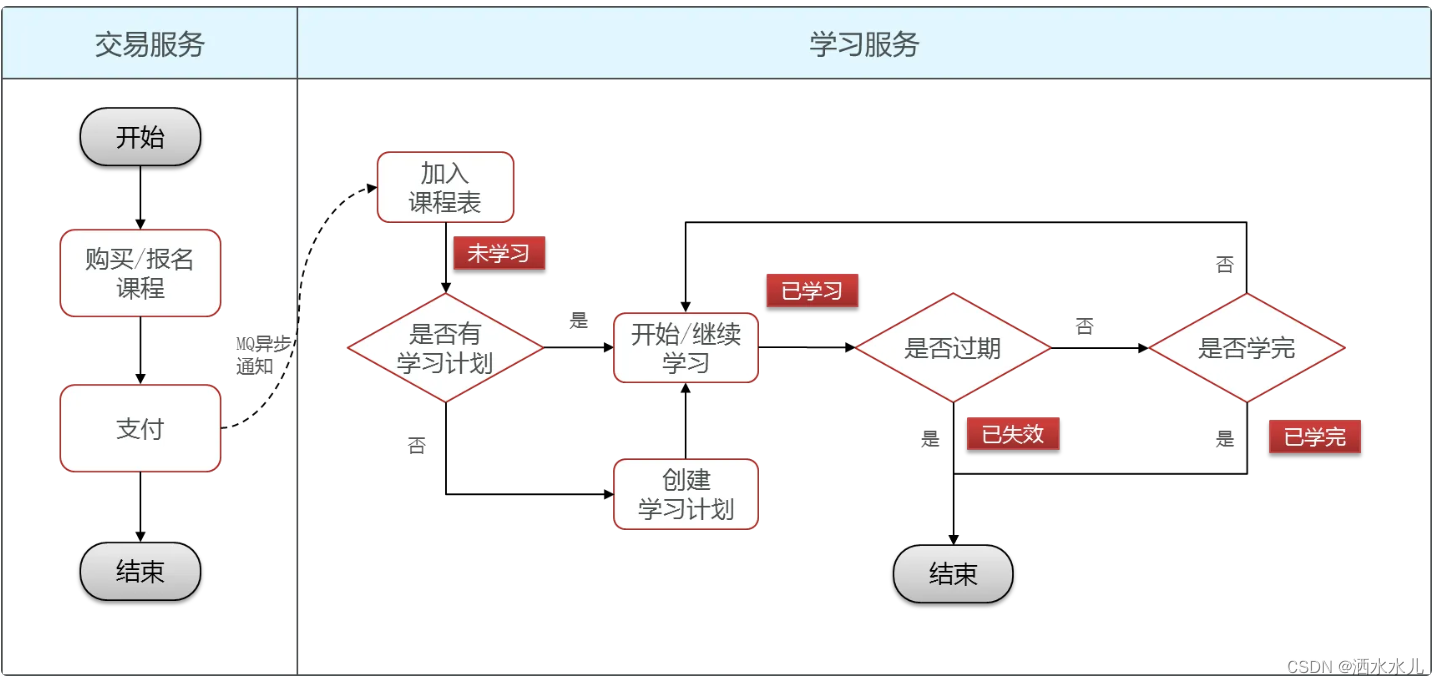
数据设计
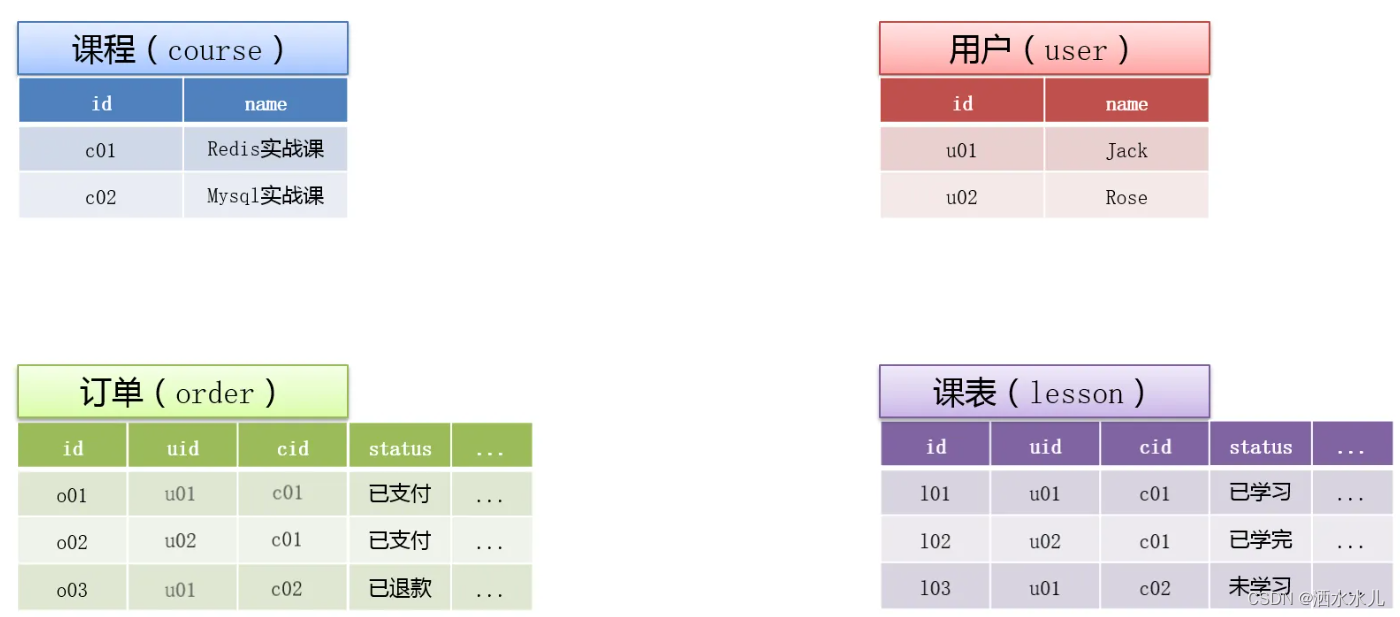
接口设计
- 支付成功报名课程后, 加入到我的课表(MQ)
- 分页查询我的课表
- 查询我正在学习的课程
- 根据id查询指定课程的学习状态
- 删除课表中的某课程
代码实现
数据表设计

添加课程到课表(非标准接口)
需求:用户购买/报名课程后,交易服务会通过MQ通知学习服务,学习服务将课程加入用户课表中

接口设计

首先写Listener,定义好RabbitMQ,对DTO数据校验后调用lessonService
@Component
@RequiredArgsConstructor
@Slf4j
public class LessonChangeListener {
private final ILearningLessonService lessonService;
@RabbitListener(
bindings = @QueueBinding(
value = @Queue(name = "learning.lesson.pay.queue", durable = "true"),
exchange = @Exchange(name = MqConstants.Exchange.ORDER_EXCHANGE, type = ExchangeTypes.TOPIC),
key = MqConstants.Key.ORDER_PAY_KEY
)
)
public void listenLessonPay(OrderBasicDTO dto) {
//1.非空判断
if(dto==null || dto.getOrderId()==null || CollUtils.isEmpty(dto.getCourseIds())){
log.error("接收到MQ的消息有误,订单数据为空");
return;
}
//2.调用业务
lessonService.addLesson(dto);
}
}
@Service
@RequiredArgsConstructor
public class LearningLessonServiceImpl extends ServiceImpl<LearningLessonMapper, LearningLesson> implements ILearningLessonService {
private final CourseClient courseClient;
@Override
public void addLesson(OrderBasicDTO dto) {
//1.远程调用tj-course微服务,根据课程id查询出课程信息(课程有效期)
List<Long> courseIds = dto.getCourseIds();
List<CourseSimpleInfoDTO> courseList = courseClient.getSimpleInfoList(courseIds);
if (CollUtils.isEmpty(courseList)) {
throw new BadRequestException("课程不存在");
}
//2.遍历课程信息,封装LearningLesson(用户id,课程id,过期时间)
List<LearningLesson> lessonList = new ArrayList<>();
for (CourseSimpleInfoDTO course : courseList) {
LearningLesson lesson = new LearningLesson();
//2.1 填充userId和courseId
lesson.setUserId(dto.getUserId());
lesson.setCourseId(course.getId());
//2.2 算出过期时间
lesson.setExpireTime(LocalDateTime.now().plusMonths(course.getValidDuration()));
lessonList.add(lesson);
}
//3.批量保存
saveBatch(lessonList);
}
}Q1: 过期时间怎么计算?
加入课表的时间(LocalDateTime.now())+课程有效期
Q2: 课程信息是怎么获得的?
远程调用课程微服务tj-course,根据课程id查询课程信息
Q3: 当前添加课表的业务是怎么保证幂等性?
当前业务靠MySQL,在DDL中把(user id ,course id)设置唯一约束
通用做法:在DTO中找个唯一标识,判断Redis里面是否有
分页查询我的课表
需求: 在个人中心-我的课程页面,可以分页查询当前用户的课表及学习状态信息。
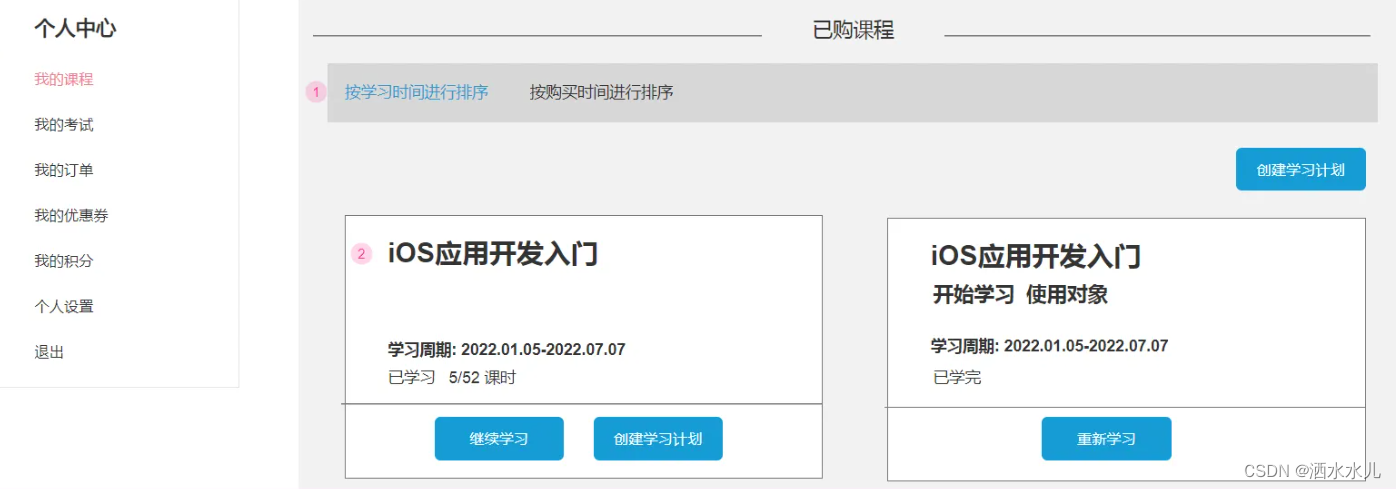
接口设计

分页用到的类如下
PageQuery
public class PageQuery {
public static final Integer DEFAULT_PAGE_SIZE = 20;
public static final Integer DEFAULT_PAGE_NUM = 1;
@ApiModelProperty(value = "页码", example = "1")
@Min(value = 1, message = "页码不能小于1")
private Integer pageNo = DEFAULT_PAGE_NUM;
@ApiModelProperty(value = "每页大小", example = "5")
@Min(value = 1, message = "每页查询数量不能小于1")
private Integer pageSize = DEFAULT_PAGE_SIZE;
@ApiModelProperty(value = "是否升序", example = "true")
private Boolean isAsc = true;
@ApiModelProperty(value = "排序字段", example = "id")
private String sortBy;
}返回的分页结果PageDTO
public class PageDTO<T> {
@ApiModelProperty("总条数")
protected Long total;
@ApiModelProperty("总页码数")
protected Long pages;
@ApiModelProperty("当前页数据")
protected List<T> list;
}接口
@RestController
@RequestMapping("/lessons")
@Api(tags = "我的课表相关的接口")
@RequiredArgsConstructor
public class LearningLessonController {
private final ILearningLessonService lessonService;
@GetMapping("/page")
@ApiOperation("分页查询我的课表")
public PageDTO<LearningLessonVO> queryMyLesson(@Validated PageQuery query){
return lessonService.queryMyLesson(query);
}
} /**
* 分页查询我的课表
*
* @param query
* @return
*/
@Override
public PageDTO<LearningLessonVO> queryMyLesson(PageQuery query) {
// 1. 分页查询出当前用户的课表信息
Long userId = UserContext.getUser();
Page<LearningLesson> pageResult = lambdaQuery()
.eq(LearningLesson::getUserId, userId)
.page(query.toMpPageDefaultSortByCreateTimeDesc());
List<LearningLesson> lessonList = pageResult.getRecords();
if (CollUtils.isEmpty(lessonList)) {
return PageDTO.empty(pageResult);
}
// 2. 根据courseId查询出课程信息
List<Long> cIds = lessonList.stream().map(LearningLesson::getCourseId).collect(Collectors.toList());
List<CourseSimpleInfoDTO> courseList = courseClient.getSimpleInfoList(cIds);
if (CollUtils.isEmpty(courseList)) {
throw new BadRequestException("课程信息不存在");
}
Map<Long, CourseSimpleInfoDTO> courseMap = courseList.stream().collect(Collectors.toMap(CourseSimpleInfoDTO::getId, c -> c));
// 3. 遍历课表List,封装LearningLessonVO
List<LearningLessonVO> voList = new ArrayList<>();
for (LearningLesson lesson : lessonList) {
LearningLessonVO vo = BeanUtils.copyBean(lesson, LearningLessonVO.class);
//封装课程信息
CourseSimpleInfoDTO course = courseMap.get(lesson.getCourseId());
if (course!=null){
vo.setCourseName(course.getName());
vo.setCourseCoverUrl(course.getCoverUrl());
vo.setSections(course.getSectionNum());
}
voList.add(vo);
}
// 4. 封装PageDTO
return PageDTO.of(pageResult,voList);
}Q1: 为什么把courseList转成了courseMap
Map中Key是课程id,Value是课程对象,从而可以通过课程id拿到课程对象
查询最近正在学习的课程
需求: 在首页、个人中心-课程表页,需要查询并展示当前用户最近一次学习的课程
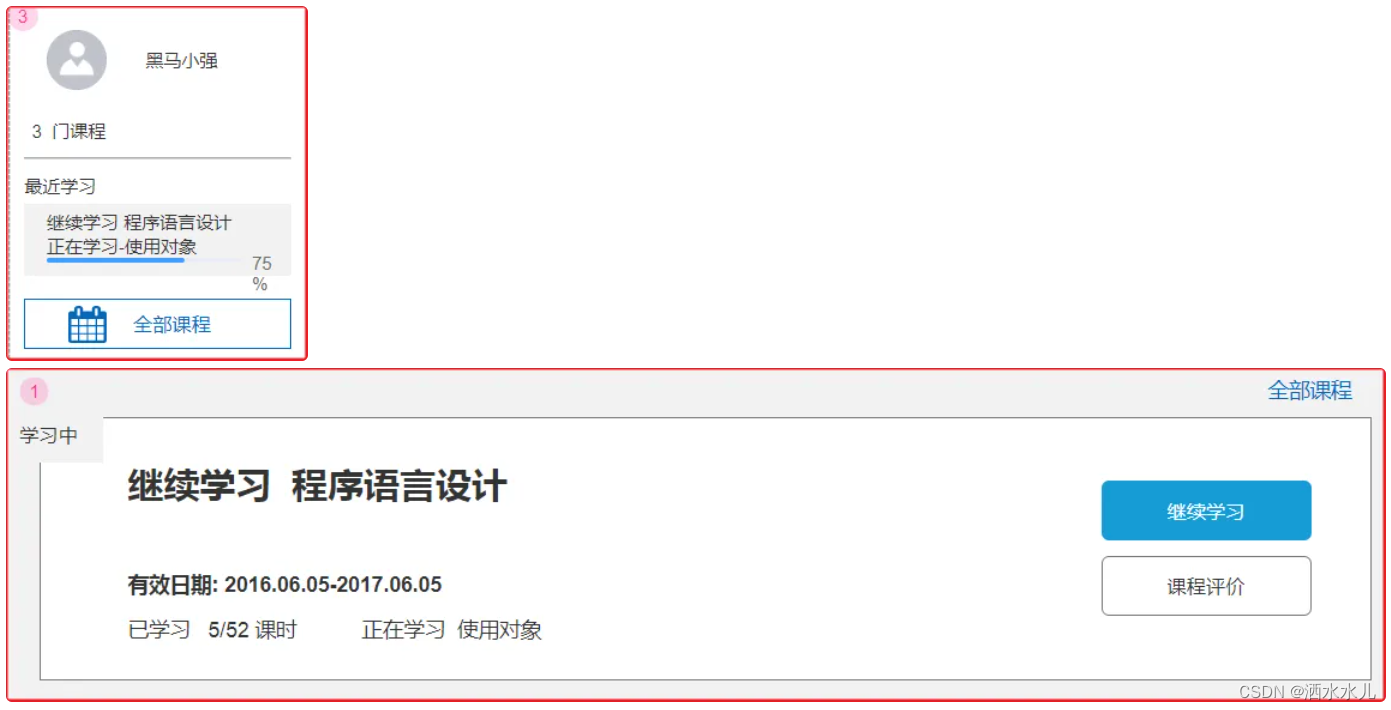
接口设计
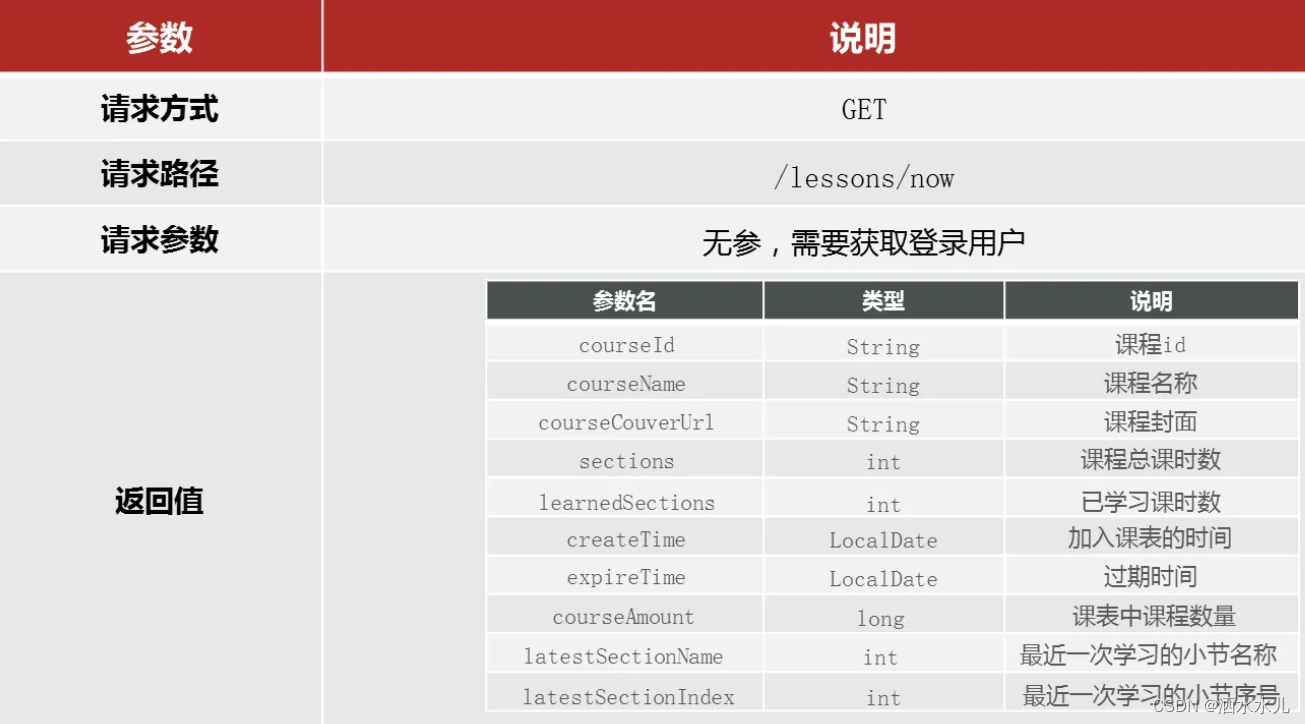
这次代码是个标准的三层都写案例了
@GetMapping("/now")
@ApiOperation("查询当前用户正在学习的课程")
public LearningLessonVO queryCurrent() {
return lessonService.queryCurrent();
} /**
* 查询当前用户正在学习的课程
*
* @return
*/
@Override
public LearningLessonVO queryCurrent() {
//1.获得当前用户Id
Long userId = UserContext.getUser();
//2.查询课表,当前用户正在学习的课程 SELECT * FROM learning_lesson WHERE user_id =2 AND status = 1 ORDER BY latest_learn_time DESC limit 0,1;
LearningLesson lesson = getBaseMapper().queryCurrent(userId);
if(lesson == null){
return null;
}
LearningLessonVO vo = BeanUtils.copyBean(lesson, LearningLessonVO.class);
//3.根据课程id查询出课程信息
CourseFullInfoDTO course = courseClient.getCourseInfoById(lesson.getCourseId(), false, false);
if(course == null){
throw new BadRequestException("课程不存在");
}
vo.setCourseName(course.getName());
vo.setCourseCoverUrl(course.getCoverUrl());
vo.setSections(course.getSectionNum());
//4.统计课程中的课程
Integer courseAmount = lambdaQuery().eq(LearningLesson::getUserId, userId).count();
vo.setCourseAmount(courseAmount);
//5.根据最近学习的章节id查询章节信息
List<CataSimpleInfoDTO> catalogueList = catalogueClient.batchQueryCatalogue(List.of(lesson.getLatestSectionId()));
if(!CollUtils.isEmpty(catalogueList)){
CataSimpleInfoDTO cata = catalogueList.get(0);
vo.setLatestSectionIndex(cata.getCIndex());
vo.setLatestSectionName(cata.getName());
}
return vo;
}public interface LearningLessonMapper extends BaseMapper<LearningLesson> {
@Select("SELECT * FROM learning_lesson WHERE user_id = #{userId} AND status=1 ORDER BY latest_learn_time DESC limit 0,1")
LearningLesson queryCurrent(@Param("userId") Long userId);
}
根据id查询指定课程的学习状态
需求: 在课程详情页需要查询用户是否购买了指定课程,如果购买了则要返回学习状态信息

接口设计
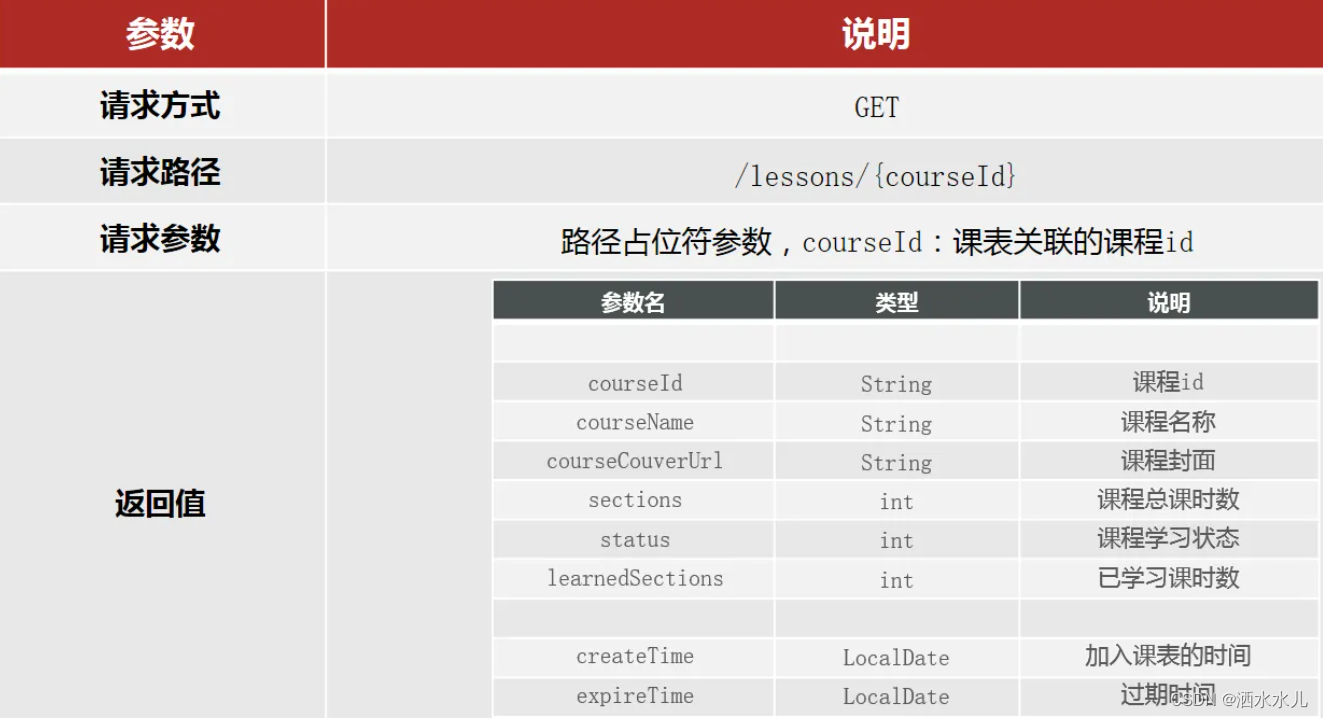
代码最简单的一集
@GetMapping("/{courseId}")
@ApiOperation("根据课程id查询课程状态")
public LearningLessonVO queryByCourseId(@PathVariable("courseId") Long courseId) {
return lessonService.queryByCourseId(courseId);
} /**
* 根据课程id查询出课程状态
*
* @param courseId
* @return
*/
@Override
public LearningLessonVO queryByCourseId(Long courseId) {
// 1. 根据用户id和课程id查询出课表LearningLesson
LearningLesson lesson = lambdaQuery()
.eq(LearningLesson::getUserId, UserContext.getUser())
.eq(LearningLesson::getCourseId, courseId)
.one();
if (lesson == null) {
return null;
}
// 2. 根据课程id查询出课程信息
CourseFullInfoDTO course = courseClient.getCourseInfoById(courseId, false, false);
if(course==null){
throw new BadRequestException("课程不存在");
}
// 3. 封装vo
LearningLessonVO vo = BeanUtils.copyBean(lesson, LearningLessonVO.class);
vo.setCourseName(course.getName());
vo.setCourseCoverUrl(course.getCoverUrl());
vo.setSections(course.getSectionNum());
return vo;
}Q1: 为什么不能直接使用courseId查询课表?
还需要userid的约束
检查课程是否有效(作业)
这是一个微服务内部接口,当用户学习课程时,可能需要播放课程视频。此时提供视频播放功能的媒资系统就需要校验用户是否有播放视频的资格。所以,开发媒资服务(tj-media)的同事就请你提供这样一个接口。

@ApiOperation("校验当前课程是否已经报名")
@GetMapping("/{courseId}/valid")
public Long isLessonValid(
@ApiParam(value = "课程id" ,example = "1") @PathVariable("courseId") Long courseId){
return lessonService.isLessonValid(courseId);
} @Override
public Long isLessonValid(Long courseId) {
// 1.获取登录用户
Long userId = UserContext.getUser();
if (userId == null) {
return null;
}
// 2.查询课程
LearningLesson lesson = lambdaQuery()
.eq(LearningLesson::getUserId, UserContext.getUser())
.eq(LearningLesson::getCourseId, courseId)
.one();
if (lesson == null) {
return null;
}
return lesson.getId();
}删除课表中课程(作业)
删除课表中的课程有两种场景:
- 用户直接删除已失效的课程
- 用户退款后触发课表自动删除
@DeleteMapping("/{courseId}")
@ApiOperation("删除指定课程信息")
public void deleteCourseFromLesson(
@ApiParam(value = "课程id" ,example = "1") @PathVariable("courseId") Long courseId) {
lessonService.deleteCourseFromLesson(null, courseId);
}@Override
public void deleteCourseFromLesson(Long userId, Long courseId) {
// 1.获取当前登录用户
if (userId == null) {
userId = UserContext.getUser();
}
// 2.删除课程
remove(buildUserIdAndCourseIdWrapper(userId, courseId));
}
private LambdaQueryWrapper<LearningLesson> buildUserIdAndCourseIdWrapper(Long userId, Long courseId) {
LambdaQueryWrapper<LearningLesson> queryWrapper = new QueryWrapper<LearningLesson>()
.lambda()
.eq(LearningLesson::getUserId, userId)
.eq(LearningLesson::getCourseId, courseId);
return queryWrapper;
}